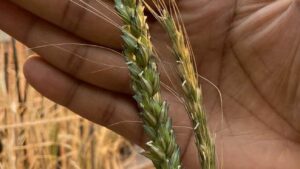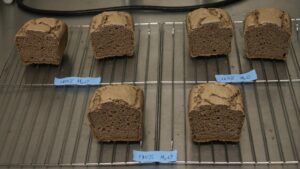Healthier and longer-lasting pita bread may be the outcome of barley research underway at the University of Adelaide’s Waite campus in Australia.
Researchers in the School of Agriculture, Food and Wine have been investigating different varieties of barley to find ones that have higher levels of vitamin E and other antioxidants at harvest and after storage. They are then making pita bread with different combinations of malt, whole grains and flour (all made from promising barley varieties) to see if they can produce pita bread with higher antioxidants, making them healthier and prolonging their storage capacity.
“Barley has historically been used for malt and livestock feed,” says Amanda Able, University of Adelaide professor of plant science. “Recently, however, there has been growing interest in the use of barley in human foods largely due to its high content of fiber, beta-glucan and antioxidants.”
Preliminary results have one hull-less (no outside husk) barley variety in particular showing promise for its high and stable levels of vitamin E.
“Usually it’s the varieties with husks that have the higher levels of antioxidants, so this hull-less variety has the additional benefit of being softer and a better type of grain for pita bread,” says Able. “Husked grain can be quite hard and not so suitable for pita.”
The next steps in the research are conducting consumer testing and further research to see if the vitamin E from the barley is being digested and used by the human body. They are also investigating the additional shelf-life due to the higher antioxidant levels. Other research will look at genetic sequencing of the barley to see which genes are responsible for the antioxidant and vitamin E levels for future breeding programs.












